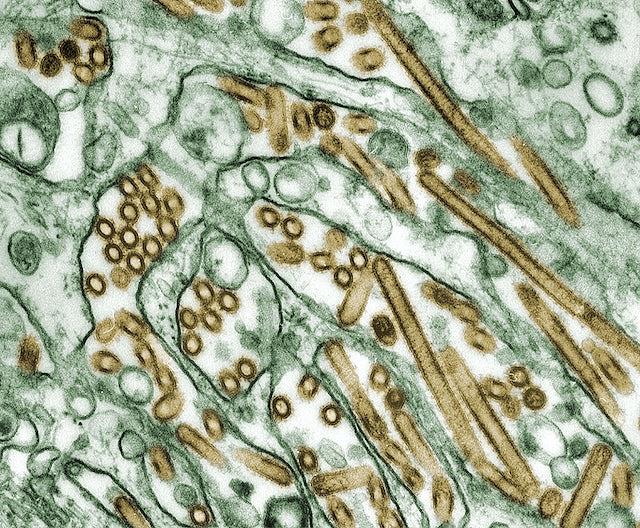-
-
Preventing the Next Pandemic
-
-
-
Lecture II.
-
-
-
Background
-
-
3.2 Terminology » Glossary
- antiviral Pharmacological agents (drugs) that prevent the infection, replication or transmission of a viral pathogen
- case-fatality rate (CFR) A standard measure of the deadliness of a disease, expressed as the percentage of infected individuals (cases) who die from the disease
- contact tracing The practice of documenting all of the people to whom an infected individual could have transmitted the disease, with the goal of monitoring, isolating and/or treating those contacts so as to slow spread
- digital (proxy) data Large datasets from various digital sources that may serve as an indirect measure of the data of interest; for example, the number of Google searches for "flu", "fever", "symptoms", etc. may serve as an estimate of the number of influenza cases
- edge An interaction between two nodes in a network
- efficacy The ability of a vaccine to prevent infection, usually expressed as a percentage of vaccinated patients who are exposed to the pathogen but do not develop symptoms of the associated disease
- epidemic An outbreak of an infectuous disease that spreads rapidly to affect a large number of people in a short period of time
- exponential growth A growth rate that changes according to the size of the population, for example, a population might grow 100% per day [100 > 200 > 400 > 800 > 1600]; sustained exponential growth requires that resources are not limiting
- herd immunity The prevention of infectuous disease spread within a population, even to susceptible individuals, because of a sufficiently high proportion of immune individuals; immunity is most often attributable to vaccination
- host The organism infected and affected by a pathogen; although the host may be asymptomatic for a variety of reasons, the host is nontheless vulnerable to infection and likely to exhibit an immune response to the pathogen
- incubation period The time between infection and first symptoms; refers to the time required for the pathogen to attack host cells/organs and elicit an immune response
- network A graph that describes the interactions between multiple, discrete entities (for instance, people, households, companies, cities, etc.)
- node A vertex in a network; corresponds to the entities in the network
- pandemic An outbreak of an infectuous disease that spreads rapidly to affect an extremely large number of people across vast geographic areas in a short period of time; an epidemic of an especially large scope
- pathogen A disease-causing organism, such as a virus, bacterium, fungus, or parasite
- pre-pandemic An infectuous disease that has the potential to emerge as an epidemic or pandemic as evidenced by widespread prevalance of the infectuous agent (for instance, in a vector) and past outbreaks of the disease; for example, the bird flu virus is endemic in poultry populations in many countries and caused a severe influenza outbreak in humans in 1997
- reproduction number (R0) In a fully susceptible population, the number of individuals expected to be infected by transmission from one infected individual
- surface antigen A molecule (often protein) that sits on the outer face of a cell or virus; surface antigens on an invading pathogen are accessible to be recognized by the immune system and prompt clearance of the pathogen
- transmissibility The probability that a susceptible individual in a population will become infected when they come into contact with an infected individual
- vaccine hesitancy The skepticism, concern or objection of individuals towards vaccination, generally for religious observance or due to folk beliefs
- vector An organism that serves as an intermediate carrier of a pathogen between hosts, physically transferring the pathogen from one host to another
- viral load The number of viral particles carried by an infected individual; generally, higher viral load leads to greater transmissibility

